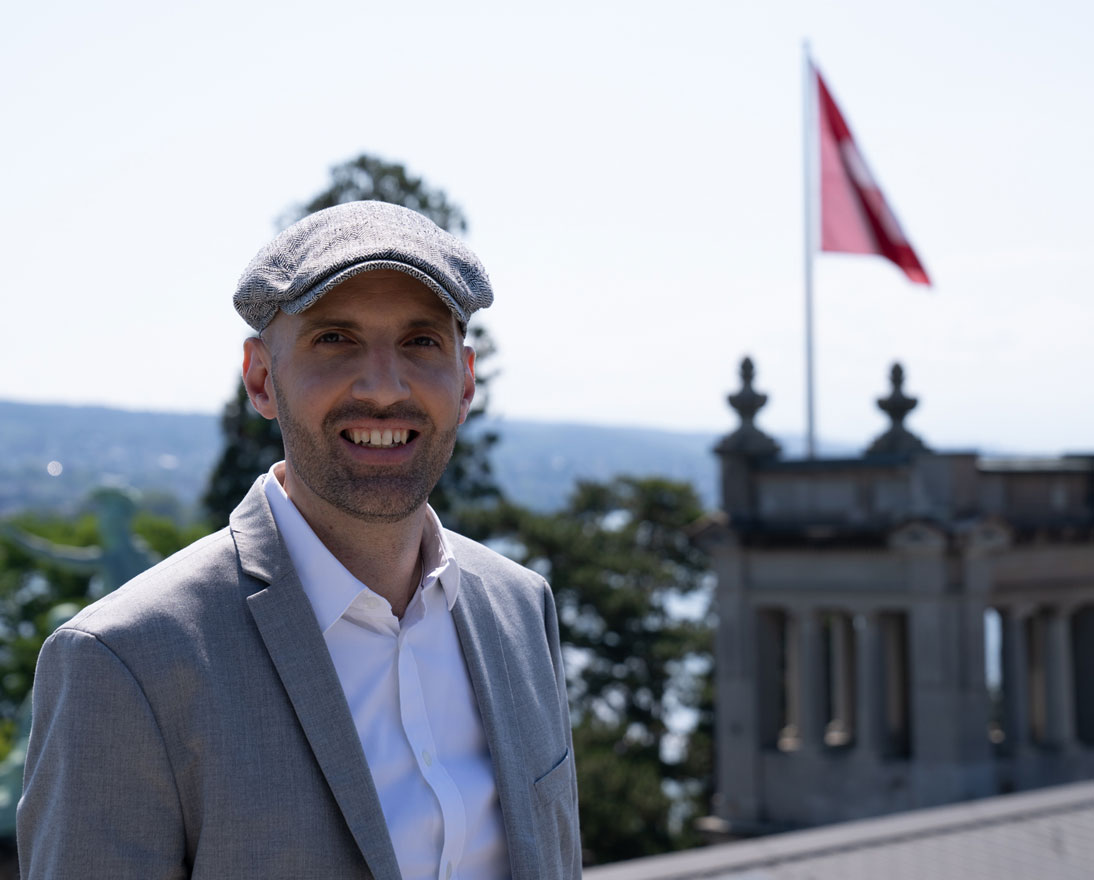How technology, including AI, gives claims investigators an edge
TechnologyArticleSeptember 23, 2024
Putting the ‘art’ in artificial intelligence, Zurich Insurance Group is using sophisticated technology paired with human intuition to detect claims fraud. There’s never a dull moment in a job that might include spotting theft, and even catching the odd murderer.
“We are real, trained investigators, and most of the people on my team are former police officers,” says Raffaello Consigli, Head of the Special Investigation Unit at Zurich’s Swiss business. He joined Zurich in 2022. With a master’s degree in law, before switching to work in insurance, he served for over a decade with the Geneva criminal police as an investigator.
Training, knowledge and experience still matter, even as technology increasingly is helping to lessen the drudgery that can take up a lot of insurance investigators’ working days. “Technology is giving investigators more time to do what only they can do – investigate,” says Consigli.
Whoever thought insurance was dull has never worked in claims fraud. It requires tact, intelligence and what German-speakers call ‘Bauchgefühl’ or gut feeling. For example, it took the suspicions of a Zurich Swiss-based claims handler to catch and convict a murderer who had hoped to cash in on a life insurance policy after the death of his ex-spouse. The claims handler notified the Swiss Special Investigation Unit to look into the case, after she found the would-be beneficiary’s persistent requests for settlement, which began only 48 hours after his wife’s death, to be, in a word, unsettling.
Besides developing IT solutions in-house, Zurich’s Swiss Special Investigation Unit is also exploring ways to use new technology, including incorporating Zurich’s internal AI chatbot in daily work to support investigations. While advanced technology makes a big difference, it is also important to make sure it is not biased, or producing false negatives or positives. Here, too, human experience, expertise, and intuition are still needed at the heart of a process that touches on all aspects of people’s lives.
More data, please
Since modern insurance began, it has been an industry in search of ways to master the vast amounts of data collected as an essential part of the business. Insurers were early adopters of technology, harnessing the power of mainframes when these came onto the market in the 1960s. That included Zurich, which in 1966 acquired its first mainframe computer, with disk storage that replaced the old punch cards Zurich had used since 1927.
Today, data is typically stored using cloud computing. Processing occurs on devices far smaller and more powerful than the old, refrigerator-sized mainframes. And the need for real-time response, and ability to extract information from all the data insurers collect, is more important than ever for the industry and its customers.
A scale of 0 to 100
Each market is different, and products and product lines vary from country to country. Zurich Switzerland introduced a core claims system, Allegro, in 2018. Today Allegro serves as just one piece of its claims system, which feeds into Zurich Switzerland’s proprietary fraud scoring tool. Most of the more than 600,000 claims it gets annually, with the exception of life insurance claims, are funneled through the system, and given a score from 0 to 100. A score above a certain level usually leads the claims investigations team to take a closer look.
Along with a rule-based system, to gain more accuracy and efficiency, Zurich’s Swiss Special Investigation Unit is now testing a machine learning model, a form of generative AI based on natural language processing that allows computers and devices to recognize and understand real human language. In this case, Zurich’s AI is being trained to spot certain words often present in fraud cases. Zurich Switzerland began a pilot using the German-language version in property and commercial lines of business in February 2024. If it proves effective, other lines of business and other languages will be added.
A Zurich in-house solution
Zurich’s in-house fraud-detection system was developed by a wholly owned data analytics company, Zurich Customer Active Management, or ‘ZCAM,’ which brings together a team of 50 specialists within Zurich, including data engineers, software designers, and project change management experts.
“Applying technology allows us to connect the dots,” says Aleksandar Vidovic, Chief Executive Officer of ZCAM. Vidovic says that ZCAM’s AI is good at spotting anomalies that could be suspicious. That might be, for example, several claims filed at the same time, supposedly for different people but all purportedly sharing the same address. Or, many claims for a large number of mobile phones damaged or stolen that were bought by the same individual. Basically, such technology “gives us insights into people’s minds,” says Vidovic.
Spotting trends
“It’s about reduced false positives,” says Andrew Fairclough, who leads Claims Excellence across Zurich Claims globally.
Fairclough says beyond spotting isolated cases of insurance fraud, Zurich’s fraud detection system can also learn as it goes. “Fraud indicators aren’t rigid. They should continue to develop and evolve, as the fraudsters develop and evolve their techniques. We are constantly using data and the insights from the solution to understand these trends, and focus on what fraudsters might be targeting next,” says Fairclough.
The process, he adds, is helping to “future-proof Zurich. It’s allowing us to keep one step ahead. We are starting to shift into a place where we can spot fraud trends.”
In-house solution for Brazil
It was Fairclough who suggested piloting Zurich’s own fraud detection system, the one developed by ZCAM, for Zurich Brazil’s so-called ‘affinities’ business, which includes extended warranties, and cover for mobile phone theft. Given the business’s high volume, he says, it is ideal for computer-assisted fraud detection.
Pleased with the results of the pilot, Zurich Brazil expanded ZCAM’s fraud-detection system to motor claims. After fine-tuning, and refinements, the results got even better, according to Rafael Andrade e Silva, Head of Claims Controlling and Governance in Zurich Brazil. The biggest selling points to convince Zurich Brazil to adopt ZCAM’s system included the increase in suspicious cases that the system spotted, and a higher number of confirmed fraud cases. The fraud detection rate in the affinities business, for example, has trebled since Zurich Brazil adopted ZCAM’s system, Andrade says.
But even positive results are little good if not backed by human expertise, including the kind provided by ZCAM. Zurich Brazil was convinced after ZCAM sent a specialist to Brazil who spent nearly two months working with Zurich Brazil’s own claims team to get the best results. “They were eager to deliver a good solution. That made the difference,” according to Andrade. He says Zurich Brazil is now working on adding new features to the system.
Customer focus
In the end, it’s the honest customers who ultimately benefit from better fraud detection, which helps to contain unnecessary claims costs. And, by making it easier to spot fraudulent claims, the process becomes more efficient at recognizing honest claimants, too.
“Most people are honest. With our systems, paired with humans, we can better, and more quickly differentiate between honest and fraudulent claims. That should allow honest customers to get their claims processed quickly,” says Vesna Ilic, who heads a claims and analytics team at ZCAM.
“With the advantage of technology, we can speed up claims processing. A good claims experience is very important for customers,” Ilic says. After all, people who need to file an insurance claim might already be dealing with stress. She adds: “An efficient solution means one less thing for them to worry about.”



